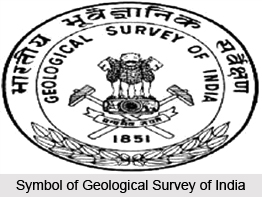 Geological Survey of India was established in 1851 by the hands of British East India Company established in 1757.
Geological Survey of India was established in 1851 by the hands of British East India Company established in 1757.
Management of Geological Survey of India
Geological Survey of India is a government organisation in India which is an office attached to the Ministry of Mines of Union Government of India for conducting geological surveys and studies.
Objectives of Geological Survey of India
Geological Survey of India is one of the oldest of such organisations in the world and the second oldest survey in the country. The GSI is the prime provider of basic earth science information to the government, industry and the general public, as well as responsive participant in international geo-scientific flora, the vibrant steel, coal, metals, cement and power industries.
History of Geological Survey of India
The roots of Geological Survey of India may be traced to 1836 when the Coal Committee, followed by more such committees, was formed by the British East India Company to study and explore availability of coals in the eastern parts of India. David Hiram Williams, one of the first surveyors for the British Geological Survey, was appointed `Surveyor of coal districts and superintendent of coal works, Bengal` on 3rd December 1845 and arrived in India the following February. The phrase "Geological Survey of India" was first used on Williams`s Map of the Damoodah and Adji Great Coal Field. On 4th February 1848, Williams was appointed the "Geological Surveyor of the Geological Survey of India", but he fell off his elephant and, soon after, died with his assistant, an F. B. Jones, of `jungle fever` on 15th November 1848, after which John McClelland took over as the "Officiating Surveyor" until his retirement on 5th March 1851.
Exploration of Geological Survey of India in British Era
The work of Geological Survey of India remained primarily exploration for coal, mainly for powering steam transport, and later oil reserves, and ore deposits. In 1852, Sir Thomas Oldham, father of Richard Dixon Oldham, broadened the ambit of the scope of functioning of the Geological Survey of India by advancing the argument with the government that it was not possible to find coal without first mapping the geological structure of India. Thus, Geological Survey of India commenced to map the rock structures and strata and their age and relationships in India. Because the method of Radiometric dating was not developed at that time, the age of rock strata had to be estimated from the presence of index fossils, and consequently, much of the geologists` efforts were spent in finding these index fossils.
Related Articles
Kolkata
History of Kolkata
West Bengal, Indian State
British Empire in India
History of British Architecture in India
Impact of British Rule in India



















